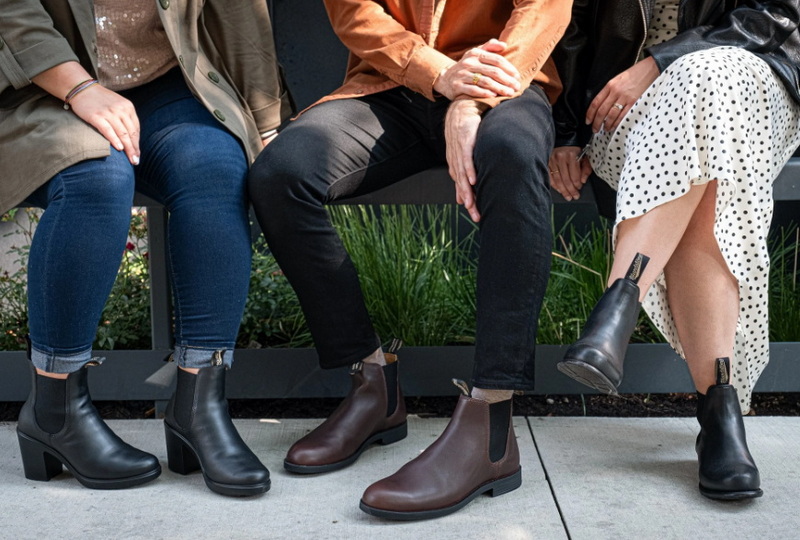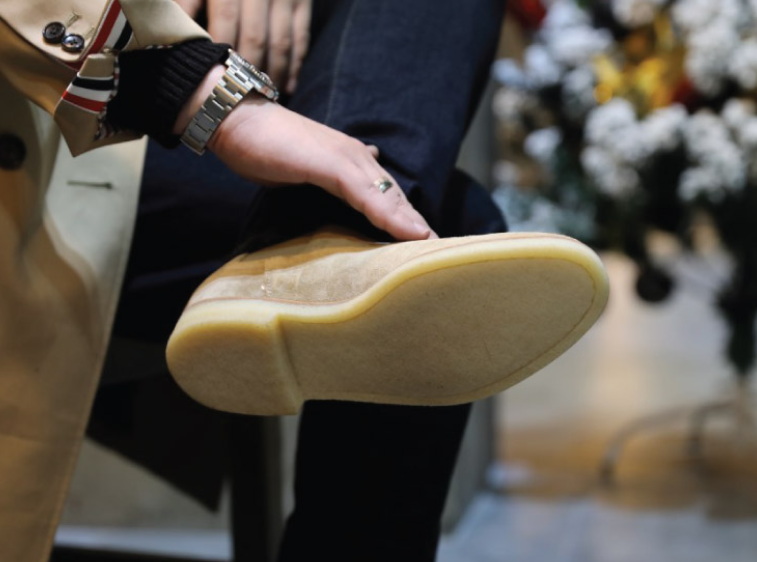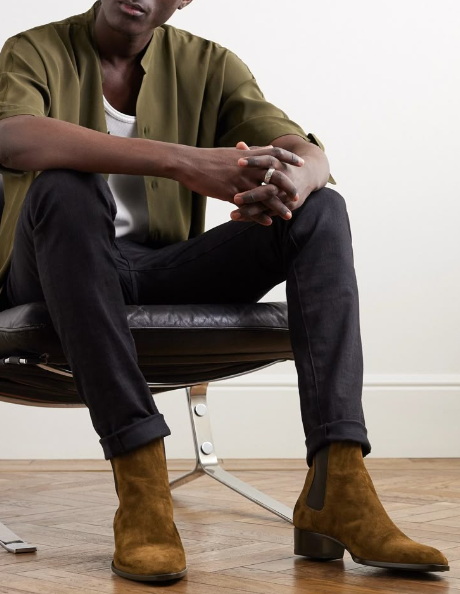Content Menu
● The Anatomy of Men's and Women's Feet
>> 1. Structural Differences
>> 2. Shoe Design and Fit
● Why Do Men's Shoes Look Wider on Women?
>> 1. Visual Proportion
>> 2. Sizing and Fit Challenges
>> 3. Style and Material Choices
● Comfort Versus Appearance
>> 1. Comfort Considerations
>> 2. Aesthetic Impact
● When Should Women Choose Men's Shoes?
>> 1. Foot Shape and Size
>> 2. Style Preferences
● Practical Tips for Women Buying Men's Shoes
>> 1. Size Conversion
>> 2. Try Before You Buy
>> 3. Consider Insoles or Socks
>> 4. Look for Unisex Options
● The Rise of Unisex and Gender-Neutral Footwear
● Social Perceptions and Confidence
● Conclusion
● FAQ
>> 1. Why do men's shoes look wider on women?
>> 2. Can women with narrow feet wear men's shoes comfortably?
>> 3. Are there unisex shoes that fit both men and women well?
>> 4. How do I convert women's shoe sizes to men's?
>> 5. What are the main risks of wearing shoes that are too wide?
● Citations:
Fashion is no longer confined by strict gender boundaries. Women increasingly explore men's sections for unique styles, better durability, or simply personal preference. Yet, a recurring question arises: Do men's shoes look wider on women? This article delves into the anatomical, stylistic, and practical aspects of this question, exploring why men's shoes might appear wider on women and what that means for comfort, aesthetics, and everyday wear.

The Anatomy of Men's and Women's Feet
1. Structural Differences
Men's and women's feet differ not just in size but in structure:
- Width: Men's feet are generally wider than women's, particularly in the forefoot and heel. This is reflected in shoe manufacturing, with men's shoes typically having a broader base and more room in the toe box[2][3][4][5][6].
- Arch and Padding: Women's shoes often feature higher arches and extra padding to accommodate the typical female foot shape, which is narrower at the heel and sometimes wider at the forefoot[2][6].
- Size Conversion: Women's shoe sizes are usually 1.5 to 2 sizes smaller than men's for the same foot length. For example, a women's US 8 is roughly equivalent to a men's US 6.5[4][6].
2. Shoe Design and Fit
- Men's Shoes: Built heavier and wider, designed to support a broader, larger foot and more body weight[6].
- Women's Shoes: Crafted with a narrower heel, higher arch support, and often more flexible materials for comfort and fit[2][6].
Why Do Men's Shoes Look Wider on Women?
1. Visual Proportion
When a woman wears men's shoes, the difference in width becomes visually apparent, especially if her feet are narrower than the shoe's standard width. The shoe may appear bulky, with extra space on the sides, and the toe box may look roomier than necessary[4][5][6].
2. Sizing and Fit Challenges
- Width Discrepancy: Even after converting to the correct length, the width of men's shoes can remain too generous for many women. This results in a looser, sometimes awkward fit, and the shoes look wider than women's equivalents[2][3][4][5][6].
- Lack of Narrow Options: Men's shoes rarely come in narrow widths, making it harder for women with slender feet to find a snug fit in men's styles[2].
3. Style and Material Choices
- Design Elements: Men's shoes often have a boxier silhouette, minimal decorative elements, and neutral colors, which can accentuate their width when worn by women[3][6].
- Material Stiffness: The use of more rigid materials in men's shoes can make them appear bulkier and less contoured to the foot, further emphasizing width[5][6].
Comfort Versus Appearance
1. Comfort Considerations
- Extra Room: Some women appreciate the extra space, especially if they have wider feet or want to wear thick socks. For others, the added width can cause the foot to slide, leading to blisters or discomfort[1][2][4][6].
- Support and Stability: Men's shoes may offer more support due to their structure, but if the fit is too loose, it can compromise stability[2][6].
2. Aesthetic Impact
- Bulky Look: The wider fit can make the shoe look oversized, especially with slim or cropped pants, skirts, or dresses.
- Fashion Statement: Some women embrace the chunkier look as a deliberate fashion choice, pairing men's shoes with casual or androgynous outfits for a bold, contemporary style[3][6].

When Should Women Choose Men's Shoes?
1. Foot Shape and Size
- Wide Feet: Women with wider feet may find men's shoes more comfortable and better fitting[1][4].
- Unique Sizing Needs: If a woman's foot does not fit standard women's sizes, men's shoes may offer a solution, especially for athletic or work footwear[2][4].
2. Style Preferences
- Color and Design: Men's shoes often come in different colorways and styles not available in women's lines, appealing to those seeking variety or a more understated look[1][3][6].
- Functionality: For certain activities, such as hiking or construction, the sturdier build of men's shoes may be advantageous[2][5].
Practical Tips for Women Buying Men's Shoes
1. Size Conversion
Always size down by 1.5 to 2 sizes from your women's size to find the men's equivalent. For example, if you wear a women's US 8, try a men's US 6.5[4][6].
2. Try Before You Buy
Fit can vary between brands and models. Whenever possible, try shoes on in-store or order from retailers with generous return policies[1][3][6].
3. Consider Insoles or Socks
If the width is slightly too much, thicker socks or cushioned insoles can help fill the space and improve fit and comfort[1].
4. Look for Unisex Options
Many brands now offer unisex shoes, designed to fit a wider range of foot shapes and sizes, reducing the risk of an awkward fit[5][6].
The Rise of Unisex and Gender-Neutral Footwear
Fashion trends increasingly blur gender lines. Unisex shoes are designed with a more neutral fit, often sitting between traditional men's and women's widths. This shift allows for greater flexibility and inclusivity, making it easier for everyone to find comfortable, stylish shoes without being restricted by gendered sections[5][6].
Social Perceptions and Confidence
While the practical aspects of fit and comfort are paramount, social perceptions still play a role. Some women may feel self-conscious about the bulkier look of men's shoes, especially in more formal settings. However, attitudes are shifting, and personal style increasingly trumps convention. Ultimately, confidence in one's choice is the key to pulling off any look[3][6].
Conclusion
Do men's shoes look wider on women? In most cases, yes—men's shoes are built wider to accommodate broader feet, so they often appear bulkier or roomier when worn by women, especially those with narrower feet. However, this is not inherently negative. For some, the extra space means greater comfort; for others, it's a bold fashion statement.
The most important factor is fit and comfort. Women with wider feet or those seeking specific styles may find men's shoes to be the perfect solution. As unisex and gender-neutral footwear becomes more common, the lines between men's and women's shoes continue to blur, offering more choices for everyone.

FAQ
1. Why do men's shoes look wider on women?
Men's shoes are designed with a broader width to fit the typical male foot, which is generally wider than a female foot. When women with narrower feet wear men's shoes, the extra width can make the shoes appear bulkier and roomier[2][4][6].
2. Can women with narrow feet wear men's shoes comfortably?
Women with narrow feet may find men's shoes too wide, leading to a loose fit. This can cause discomfort or instability. Using thicker socks or insoles can help, but it's best to try the shoes on before purchasing[1][2][6].
3. Are there unisex shoes that fit both men and women well?
Yes, many brands now offer unisex shoes, which are designed with a more neutral fit to accommodate a broader range of foot shapes. These shoes often sit between traditional men's and women's widths, providing a better fit for many people[5][6].
4. How do I convert women's shoe sizes to men's?
To convert women's shoe sizes to men's, subtract 1.5 to 2 sizes from your women's size. For example, a women's US 8 is roughly a men's US 6.5. Always check the brand's specific size chart for accuracy[4][6].
5. What are the main risks of wearing shoes that are too wide?
Wearing shoes that are too wide can lead to blisters, foot slippage, lack of support, and even injuries like plantar fasciitis. It's important to ensure shoes fit properly for both comfort and foot health[6].
Citations:
[1] https://www.reddit.com/r/running/comments/6irc2p/can_women_wear_mens_shoes_or_are_there_anatomical/
[2] https://bootworld.com/blogs/advantage/the-difference-between-mens-and-womens-work-shoes
[3] https://www.chums.co.uk/blog/is-there-a-difference-between-mens-and-womens-shoes
[4] https://runrepeat.com/guides/differences-mens-womens-running-shoes
[5] https://mallet.com/blogs/news/are-mens-shoe-sizes-the-same-as-womens
[6] https://blacktulipstudio.com/blogs/the-slow-roast/difference-between-mens-and-womens-shoes
[7] https://gufanpei.com/can-women-wear-mens-shoes-6-things-you-need-to-know/

















